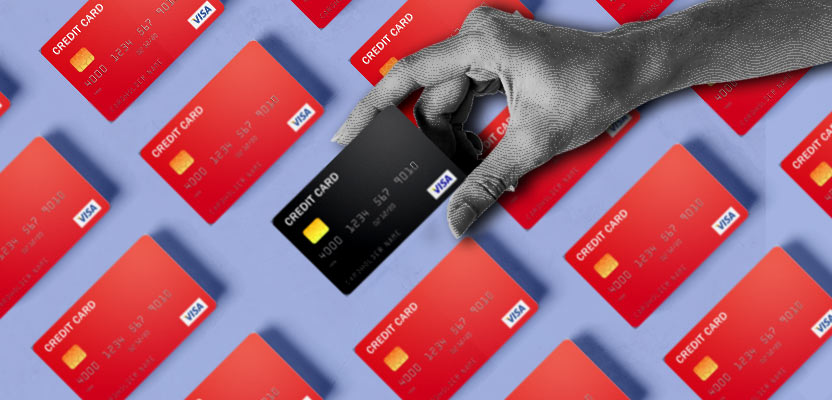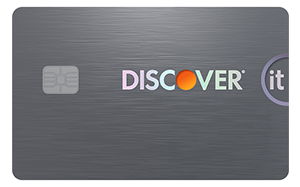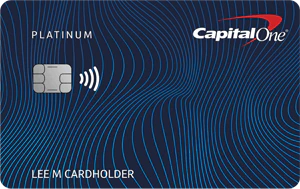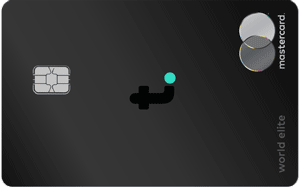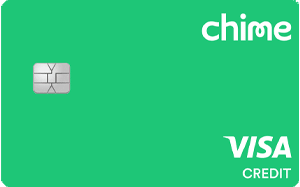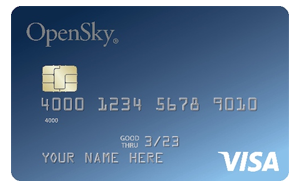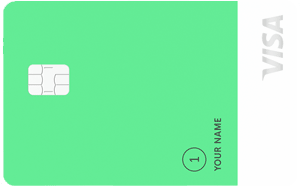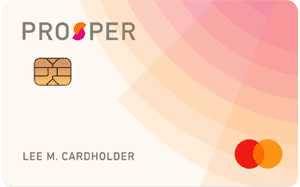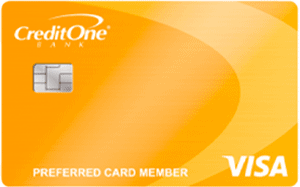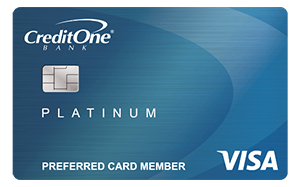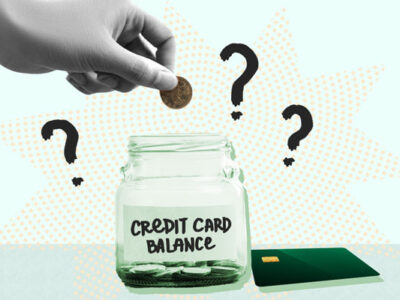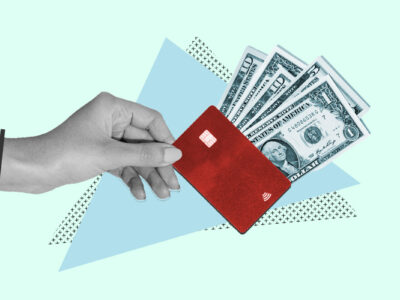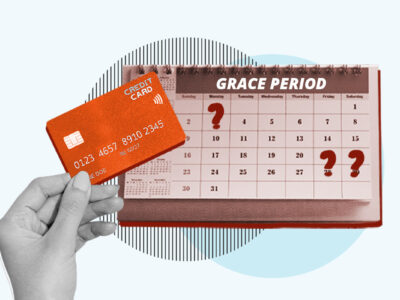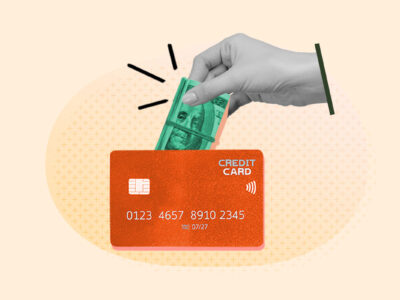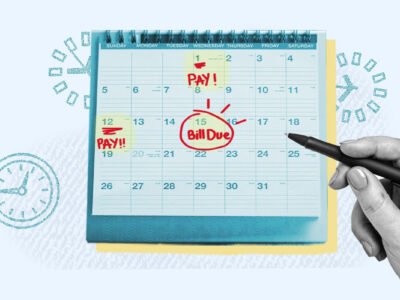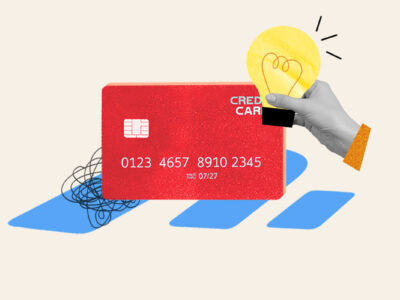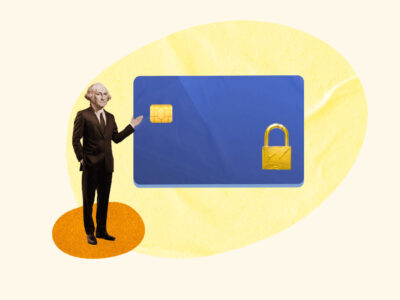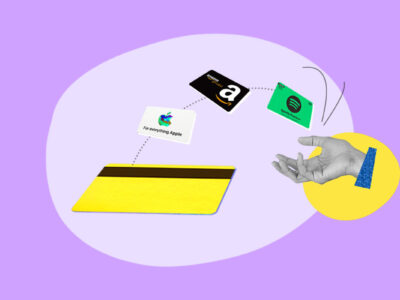Credit Cards for Bad Credit
| Credit Card | Best For | Credit Score | Annual Fee | Welcome Bonus | |
|---|---|---|---|---|---|
| Overall | 300 – 669 | N/A | Cashback Match | ||
| Secured | 300 – 669 | N/A | N/A | ||
| Unsecured (No Deposit) | 300 – 669 | N/A | N/A | ||
| No Interest | 300 – 669 | N/A | N/A | ||
| No Credit Check | 300 – 669 | $35 | N/A | ||
| No Fees | 300 – 669 | N/A | N/A | ||
| High Credit Limit | 300 – 669 | N/A | N/A | ||
| Rewards (Secured) | 300 – 669 | N/A | N/A | ||
| Rewards (Unsecured) | 300 – 669 | N/A | N/A | ||
Table of Contents
When you have a bad credit score or a damaged credit history, qualifying for a credit card can be difficult. Even worse, most of the cards available to people with bad credit charge high fees and interest rates, and don’t offer many rewards or benefits.
Luckily, there are some hidden gems out there for borrowers with bad credit, and we’ve found the best of the best. Learn about how to get a credit card when you have poor credit and browse our top picks for the best credit cards for bad credit.
What is bad credit?
Bad credit is when you have a low credit score or negative marks on your credit history, like bankruptcies, defaulted loans, or foreclosures. A bad credit score is a FICO score under 580 or a VantageScore under 601.
Can I get a credit card with bad credit?
Yes, you can get a credit card with bad credit. Given how many credit cards are available today, even borrowers with no credit history or very bad credit can qualify for lines of credit.
However, a person with bad credit is more likely to be seen as a high-risk borrower, so your credit card options will be more limited than someone with a good credit score. Credit cards for bad credit often have worse borrowing terms than credit cards for good credit, and they boast fewer perks. Negative features of credit cards for bad credit include:
- High APR
- Annual fees
- Security deposits
- Limited or no rewards
- Low credit limits
Do I have to get a secured credit card if I have bad credit?
No, bad credit holders can get both secured and unsecured credit cards. Secured cards are usually easier to get; the security deposit acts as collateral against risky borrowers, so lenders are more willing to extend secured lines of credit. Additionally, some secured credit cards don’t require credit checks to get, so your credit history won’t be taken into account when you apply.
However, there are also many unsecured credit cards available to people with poor credit. Be aware that unsecured credit cards for bad credit tend to have higher fees and fewer perks. For example, you’re more likely to find a secured credit card for bad credit that offers rewards.
How do I get a credit card with bad credit?
To get a credit card when you have bad credit, follow these steps:
Step 1: Determine your credit score
Before you start applying for credit cards, know where your credit stands by looking up your score and understanding what your credit score means.
You can find your credit score by:
- Checking with your bank or another financial institution to find out whether they offer free credit scores.
- Purchasing your credit score directly from FICO or VantageScore.
- Using a paid or free credit scoring service.
- Talking to a non-profit credit counselor.
- Requesting a free credit score from Experian.
- Going to AnnualCreditReport.com to download a free credit report. This won’t necessarily include your credit score, but it will help you understand where your credit stands.
Once you know your credit status, you can narrow your credit card options to the ones you’re most likely to qualify for. As applying for credit cards results in hard inquiries (which lower your credit score), you want to be careful not to apply for many cards at once, especially if you’re not likely to be approved.
Step 2: Choose a card
Research potential credit cards and choose the right one for you. Consider the list of credit cards for bad credit below or look for other borrowing options.
When choosing your credit card, always read through the card’s rates and fees page before applying for it. Rates and fees are listed in a card’s Schumer box, which can be found on the credit card website or by searching the Consumer Finance Credit Card Agreement Database.
Step 3: Apply for a credit card
Once you’ve selected the best credit card for you, it’s time to apply. Many of the cards on this list have easy online applications, most of which offer instant approval.
To apply, you’ll need to provide a few pieces of information and let the credit card issuer handle the rest. You’ll likely be asked to provide your:
- Legal name
- Email address
- Phone number
- Physical address (P.O. boxes are usually not allowed)
- Social Security number or ITIN
- Employment status
- Annual income
- Recurring expenses (e.g., rent, alimony, child support)
You’ll often receive an approval response instantly, but you may have to wait a few days if the issuer needs to verify your information. After you’ve been approved, you can expect your new card to arrive in the mail within two weeks. Once you receive it, you’ll need to call the number on the back to activate your card before you can use it.
How do I choose a credit card for bad credit?
When you’re researching credit cards for bad credit, consider the following card features:
- APR: This is the yearly interest rate on a credit card. APR (which stands for “annual percentage rate”) tends to be higher on credit cards for poor credit, meaning you’ll be charged more interest on any balances you carry from month to month. Look for an APR under 28%, as anything over that is high even for bad-credit credit cards.
- Fees: Understand what fees a credit card charges and determine if you can afford the cost. For example, many credit cards for bad credit charge annual fees. Look for one under $50/year, unless the card offers enough perks to outweigh a higher annual fee. Some cards even charge monthly fees. In our research, we’ve found few cards with monthly fees that are worth the cost, and we recommend avoiding such cards.
- Security deposits: If you’re looking at secured credit cards, understand how the security deposit works. Check the minimum amount you can put down, the maximum amount you can pay if you want a higher credit limit, and whether the security deposit is refundable.
- Credit limits: A credit card’s credit limit is the maximum amount you can charge to that card. Most credit cards for bad credit have low credit limits. Find a card that you won’t need to max out in order to afford all of the monthly expenses you’re planning on charging to it. Note that a higher credit limit will also boost your credit score by reducing your credit utilization rate, which is the overall percentage of your credit that you’re using at a time.
- Capabilities: Not all credit cards have the same range of functions. Depending on what your needs are, check whether a credit card offers the ability to make balance transfers, withdraw money through cash advances (although this practice isn’t recommended due to high cash advance fees and interest rates), or add authorized users. If you’re considering a secured credit card, you should also check if the card can be graduated to an unsecured credit card.
9 best credit cards for bad credit
Here are our top 9 picks for the best credit cards you can get with bad credit.
Overall best credit card for bad credit
Best secured credit card for bad credit
Capital One® Platinum Secured
Annual Fee $0
Credit Score 300 – 669
Deposit $49 – $200
Purchase APR 26.49% (variable)
Why It's Great
Most credit cards for bad credit are secured cards. Secured cards require a security deposit, which acts as collateral against high-risk borrowers (people who are less likely to pay their credit card bills). If you have to pay a security deposit for a credit card, you might as well get a worthwhile card.
The Capital One® Platinum Secured credit card is one of the best secured credit card for bad credit given its limited fees, flexible deposit, and credit-building power.
The Capital One® Platinum Secured credit card doesn’t charge an annual fee or any foreign transaction fees, making it a great choice for bad-credit borrowers who frequently travel abroad. Even better, the card offers tools and resources for building or rebuilding your credit. For example:
- Flexible due dates
- CreditWise credit monitoring
- Monthly credit scores
One of the main draws of the card is that it only requires a deposit of $49, $99, or $200 in exchange for a $200 credit limit. With other secured cards for bad credit, your deposit amount will determine your limit (they'll be equivalent), so the Capital One® Platinum Secured offers a rare chance to pay less and get more.
Pros & Cons
Pros
- Flexible security deposit
- No annual fee
- No foreign transaction fees
- Credit limit increases available
- Card graduation & deposit refund available
Cons
- Medium-high APR
- No rewards
- Low initial credit limit
Best unsecured credit card for bad credit
Tomo Credit Card
Annual Fee $0
Credit Score 300 – 669
Credit Limit $100 – $10,000
Why It's Great
The Tomo Credit Card offers bad-credit borrowers a unique chance to build credit quickly. It's unsecured, offers jaw-dropping credit limits up to $10,000, and doesn't charge any interest.
Confused? The Tomo Credit Card doesn't charge interest because it employs a unique 7-day billing cycle. You use your credit card and pay it back each week, or you risk your card being locked until your balance is paid in full.
Your balance will be automatically withdrawn from your linked bank account each week, so you don't need to worry about keeping up with frequent bills. This system is great for borrowers who have struggled to manage debt in the past or are new to borrowing. The Tomo Credit Card forces responsible payment habits, which will help you boost that credit score in no time.
Pros & Cons
Pros
- No fees or APR
- No security deposit requirement
- No credit check required
- Reporting to all three major credit bureaus
- Benefits including cell phone insurance
- Occasional rewards and credits
Cons
- You can’t carry a balance
- A bank account must be linked
- Inflexible payment schedule
- No balance transfers
- No cash advances
Best no-interest credit card for bad credit
Chime Credit Builder Secured Visa®
Annual Fee $0
Credit Score 300 – 669
Deposit $200
Why It's Great
Another credit card that doesn't fit the traditional mold, the Chime Credit Builder Secured Visa® boasts a unique approach to credit building. It offers borrowers with bad credit the chance to repair their credit score at a low risk and low cost.
Among its most notable benefits, it offers:
- No fees: No annual, monthly, maintenance, program, or even foreign transaction fees.
- No interest: There’s no interest whatsoever on this credit card.
- Flexible security deposit: Unlike with most security deposits, you can use your Chime deposit to pay off your monthly balance.
And when we say no fees, we mean it. The card doesn't even charge a cash advance fee, which is an incredibly rare perk in credit cards.
Pros & Cons
Pros
- No interest charges
- No annual fee
- No credit check to apply
- No foreign transaction fees
- No cash advance fees within ATM network
Cons
- You must open a Chime checking account
- $200 minimum security deposit
- No rewards
Best credit card for bad credit with no credit check
OpenSky® Secured Visa®
Annual Fee $35
Credit Score 300 – 669
Deposit $200 – $3,000
Purchase APR 21.14% (variable)
Why It's Great
The OpenSky® Secured Visa® is another secured credit card for bad credit, but one with a major perk—no credit check is needed when you apply. In other words, the lender won’t look into your credit history or put a hard inquiry on your credit report (which usually knocks a few points off your credit score).
Because your borrowing history won’t be reviewed when you apply, the OpenSky® Secured Visa® has incredibly high approval odds, making it a near-guaranteed approval credit card. While this is one of the easiest credit cards to get when you have bad credit, it does have a couple of notable downsides. First, it charges an annual fee of $35. Second, it doesn’t offer any rewards.
All things considered, $35 is a relatively low annual fee, and most credit cards for bad credit don’t offer rewards. So if you’re worried about being approved for a credit card, this is definitely one worth considering.
Pros & Cons
Pros
- Helps build credit
- Low APR
- No checking account required
- High approval odds
- No credit check
Cons
- Requires a security deposit
- $35 annual fee
- Can’t upgrade to an unsecured card
- No rewards
Best credit card for bad credit with no fees
Petal 1 Visa®
Annual Fee $0
Credit Score 300 – 669
Purchase APR 22.99% – 32.49% (variable)
Credit Limit $300 – $5,000
Why It's Great
As you’ve probably noticed, it’s hard to find a credit card for poor credit that’s both unsecured and doesn’t charge an annual fee. Now imagine finding that, plus rewards. That gives you the Petal 1 Visa®, a credit card for bad credit that doesn’t charge a deposit or fees and offers high approval odds.
What makes the Petal 1 Visa® especially unique is that you don’t need a credit history or even a Social Security number to apply. Instead, you’ll need to go through the Petal credit card pre-approval process. The issuer will then let you know whether you’re eligible to submit an official application for:
- Both the Petal 1 and Petal 2 credit cards
- Only the Petal 1 credit card
- Neither card
You should apply for the Petal 2 if given the option, as it gives better rewards, but the Petal® 1 is still a great unsecured credit card for bad credit. It even gives 1%–10% cashback rewards when you shop with select merchants through a program called Petal Offers.
Pros & Cons
Pros
- No deposit required
- No annual fee
- No foreign transaction fees
- Up to 10% cashback rewards
- Available to people with no credit score
Cons
- Cashback rewards are limited to select merchants
- Potentially very high APR
- Balance transfers and cash advances not available
Best credit card for bad credit with a high credit limit
Prosper® Card
Annual Fee $39 ($0 for the first year if you set up autopay)
Credit Score 300 – 669
Purchase APR 22.74% – 33.74% (variable)
Credit Limit $500 – $3,000
Why It's Great
For an unsecured credit card for bad credit, the Prosper® Card offers a surprisingly high credit limit. If you’re looking to maximize your purchasing power in a credit card, this is probably the one for you. You can qualify for an initial credit line of $500–$3,000 with the potential for automatic credit limit increases, going so far as to double your credit limit within 3 months.
Other credit cards available to borrowers with bad credit tend to offer credit limits of $200–$300, meaning the Prosper® Card easily beats most cards for bad credit when it comes to having a high credit limit.
While you won’t need to pay a security deposit, the Prosper® Card does come with an annual fee. However, the annual fee is only $39, which is less than most similar card fees, and you can get it waived for the first year if you set up autopay. That means you can get upwards of $6,000 in credit in your first year without paying any annual fee.
Pros & Cons
Pros
- No deposit required
- No cash advance fees
- Fast application
- Credit limit increases available after 3 months
- Foreign transactions are available
Cons
- High APR
- $39 annual fee
- No rewards
- Balance transfers not available
Best secured rewards credit card for bad credit
Credit One Bank® Secured Card
Annual Fee $0
Credit Score 300 – 669
Purchase APR 28.24% (variable)
Deposit $200
Rewards
-
Eligible Purchases
1% cash back on gas, groceries, your monthly mobile phone, internet, cable, and satellite TV services
Why It's Great
If you want rewards and are willing to put down a security deposit, the Credit One Bank® Secured card is a great choice. Unlike the Discover it® Secured, it doesn't offer rewards on every purchase—however, it offers 1% cash back on regular expenses like:
- Gas
- Groceries
- Mobile phone bill
- Internet bill
- Cable/satellite bill
The minimum deposit required is $200, which is relatively accessible for new borrowers or those looking to rebuild their scores.
Pros & Cons
Pros
- Cashback rewards
- No annual fee
- Security deposit earns interest
- Credit reporting to all three major bureaus
- Rewards are redeemed automatically
Cons
- Not all purchases get cashback rewards
- Security deposit required
- No indication of card upgrades
- Foreign transaction fees
- High APR
Best unsecured rewards credit card for bad credit
Credit One Bank® Platinum Visa® for Rebuilding Credit
Annual Fee $75-$99
Credit Score 300 – 669
Purchase APR 26.99% (variable)
Credit Limit $300
Rewards
-
Gas, Groceries, & Telecom Bills
1% cash back on eligible spending toward gas, groceries, mobile phone service, and internet, cable, and satellite TV service
Why It's Great
If you want cashback rewards but aren't willing to pay a security deposit, your options are limited with a bad credit score. However, there are some hidden gems you can consider while you improve your score and clear the pathway for better rewards cards.
One of those rare finds is the Credit One Bank® Platinum Visa® for Rebuilding Credit, which doesn't require a security deposit and offers 1% cash back on gas, groceries, and monthly bills (mobile phone, internet, cable, and satellite).
Beware though, this card comes with a $99 annual fee starting in the second year, which is a pretty hefty cost if you plan on leaving this card open long-term.
Pros & Cons
Pros
- No security deposit required
- 1% cash back on common purchases
- Available to people with bad credit
Cons
- Medium-high APR
- $99 annual fee after the first year
How We Rate Our Cards
Every card we review is rated on a 5-star rubric that's unique to the card's intended audience. A card's final rating will be based on factors like its:
- Fees
- Interest Rates
- Rewards
- Credit Limit
- Accessibility
- Benefits
Our rubrics are completely transparent and open to alterations as advised by you, our readers. Join us on Discord if you have thoughts to share about how we rate and review credit cards.
